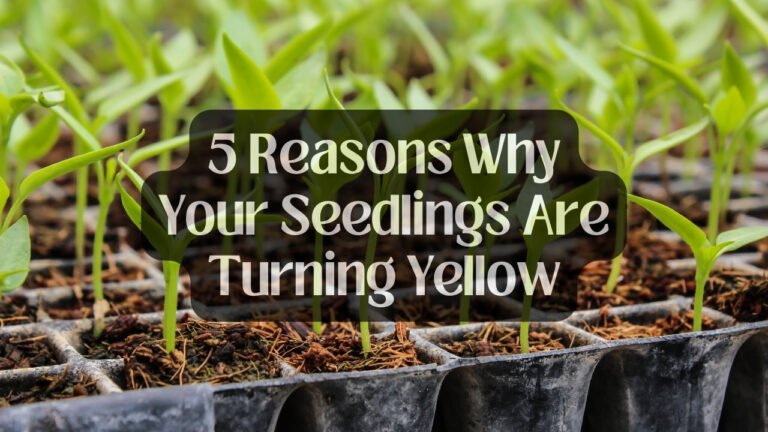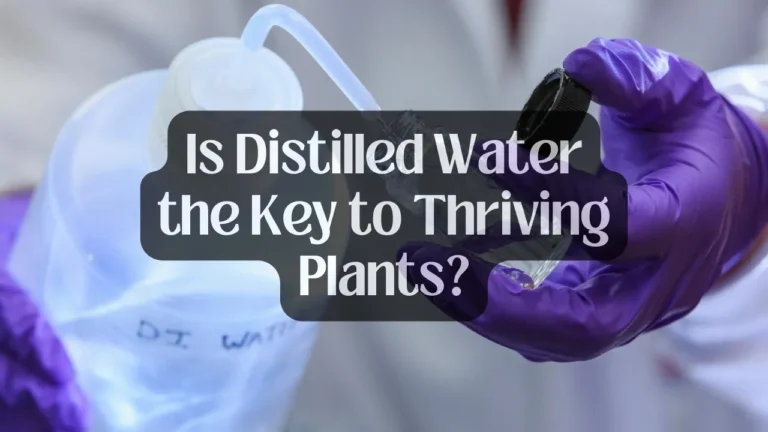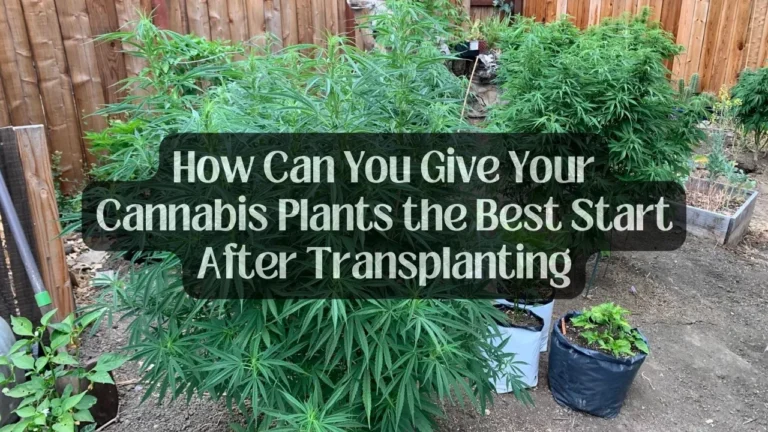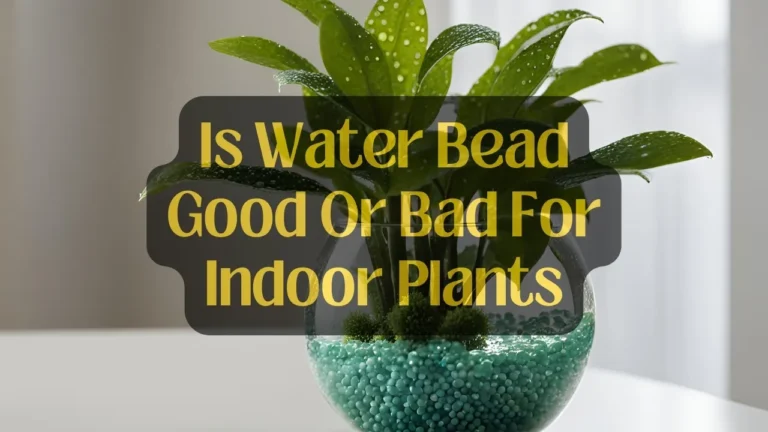Root Rot SOS: How Hydrogen Peroxide to the Rescue?

Don’t despair! This article will be your guide to saving them with a surprising hero: hydrogen peroxide.
How to use hydrogen peroxide for root rot in plants? Well, in short, the process is as follows:
- Mix equal parts 3% hydrogen peroxide and water.
- Thoroughly water your plant with the solution, soaking the soil.
- Avoid pouring on leaves.
- Repeat every few days for mild cases, be patient for recovery.
We’ll explore what root rot is, how it harms your plants, and how this common household item can be your secret weapon. We’ll also cover how to use it safely and effectively, along with some helpful prevention tips. Let’s start the venture!
Table of Contents
What Causes Root Rot, and Why Should You Care?

Root rot is a fungal disease that thrives in damp, oxygen-deprived conditions. It attacks the roots of your plants, causing them to decay and ultimately compromising the plant’s ability to absorb water and nutrients.
If you leave this unchecked, root rot can spell doom for even the hardiest of plants.
While the thought of root rot may send shivers down your spine, tackling it early is crucial. Fortunately, hydrogen peroxide can be your secret weapon in this battle against this relentless foe.
How Does Hydrogen Peroxide Fight Against Root Rot?
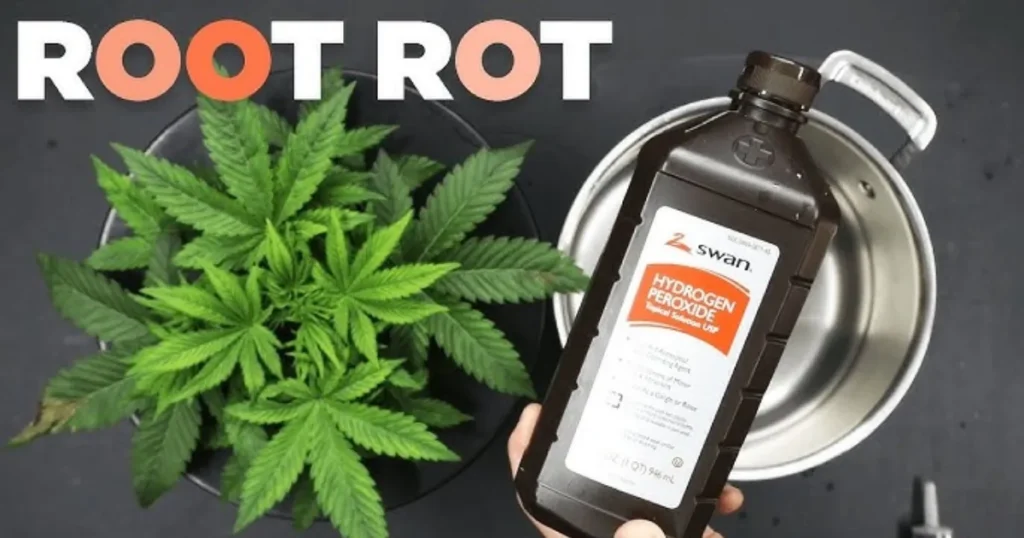
Hydrogen peroxide (3% solution) is a common household product that can be a powerful tool for gardeners. Here’s how it fights root rot.
- Kills Fungal and Bacterial Infections: The extra oxygen atom in hydrogen peroxide acts as a disinfectant, killing the fungi and bacteria that cause root rot.
- Boosts Root Oxygen: Healthy roots need good oxygen levels. Hydrogen peroxide helps increase oxygen in the soil, creating an environment that suffocates root rot pathogens.
- Promotes New Root Growth: By eliminating root rot and improving oxygen availability, hydrogen peroxide allows your plants to grow healthy new roots and recover.
How to Use Hydrogen Peroxide for Root Rot
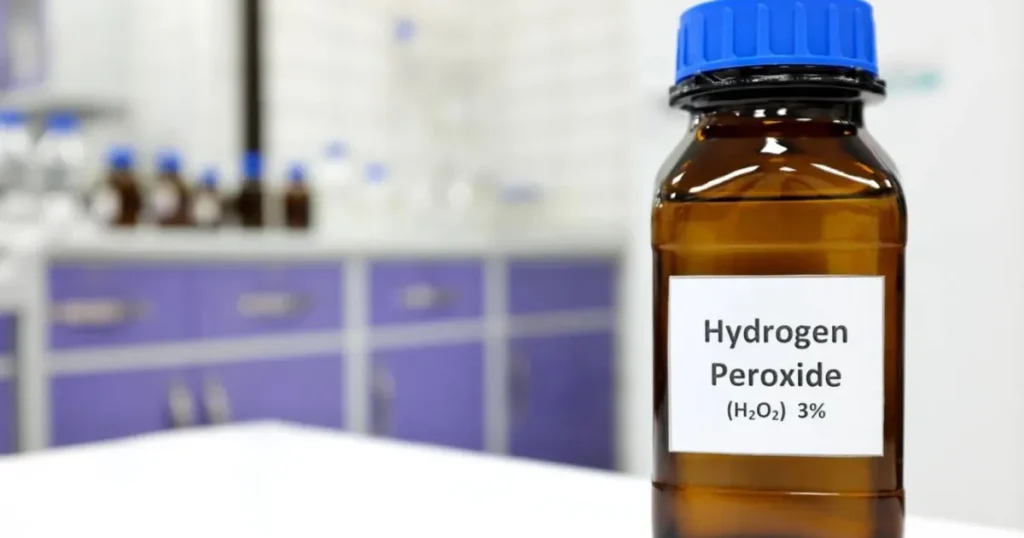
Using hydrogen peroxide to treat root rot is a simple and straightforward process. Here’s what you need to do:
Obtain Hydrogen Peroxide
Look for a 3% solution of hydrogen peroxide, which is readily available at most grocery or drug stores. Avoid using higher concentrations, as they can be too harsh for your plants.
Prepare the Solution
Mix equal parts of the 3% hydrogen peroxide solution and water. For example, if you’re using a cup of hydrogen peroxide, add a cup of water.
Water Your Plants
Thoroughly water your affected plants with the hydrogen peroxide solution, ensuring that the soil is fully saturated. Avoid pouring the solution directly onto the leaves, as it can potentially cause burning.
Repeat as Needed
Depending on the severity of the root rot, you may need to repeat this process every few days until you notice improvement. Be patient – it may take some time for your plants to recover fully.
Remember, prevention is always better than cure. To avoid future issues with root rot, ensure that your plants are in well-draining soil and that you’re not overwatering them.
Want Prevention Tips?
- Use well-draining soil to avoid future root rot issues.
- Water only when the top inch of soil feels dry to prevent overwatering.
FAQs
Want to know more? Check out these FAQs below.
Q: Are there any alternative natural treatments for root rot besides hydrogen peroxide?
While hydrogen peroxide is a great option, some gardeners prefer organic methods. You can try treatments like cinnamon powder, which has antifungal properties, or watering with a neem oil solution to combat the fungal pathogens causing root rot.
Can hydrogen peroxide harm my healthy plants?
Hydrogen peroxide is generally safe for plants when used at the recommended dilution (1:1 ratio with water). However, it’s always best to err on the side of caution. Test the solution on a small area of the plant first and monitor for any signs of stress before applying it all over.
Q: My plant seems beyond saving, should I even try hydrogen peroxide?
Hydrogen peroxide works best in the early stages of root rot. If your plant is severely wilted and the roots are mushy and brown, it’s too late. However, it won’t hurt to try the hydrogen peroxide solution.
Q: How long will it take for my plant to recover from root rot after using hydrogen peroxide?
The recovery time depends on the severity of the root damage. With early intervention and proper care, you should see signs of improvement within a week or two. But for extensive damage, it could take several weeks or even months for the plant to fully recover.
Conclusion
While root rot can be a challenge, hydrogen peroxide offers a natural and effective solution. Its application not only combats the damaging effects of root rot but also fosters a healthy and vibrant root system.
Therefore, if you suspect root rot, consider utilizing hydrogen peroxide. This readily available product can help your plants flourish once again. Happy gardening!

